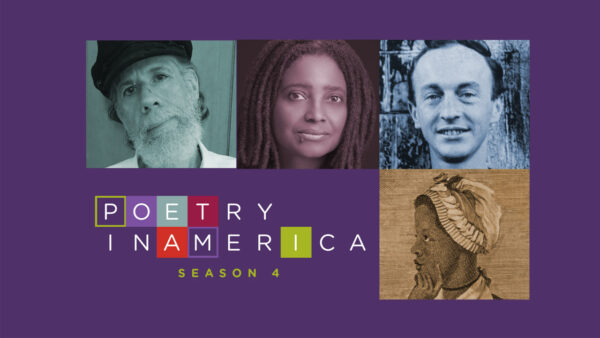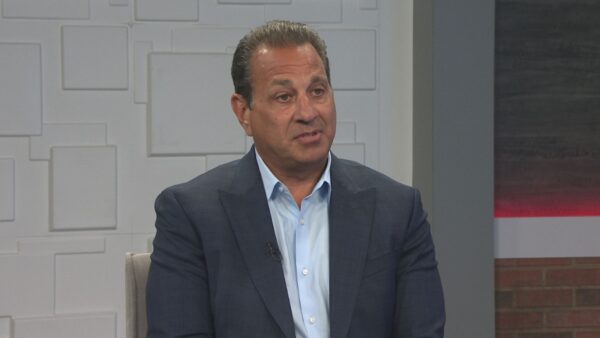Former Phoenix Mayor John Driggs’ legacy includes literally helping shape the city of Phoenix and preservation of open land. He recently passed away at the age of 87. Former Phoenix Mayor Terry Goddard will discuss Driggs’s life and legacy.
Ted Simons: Former Phoenix Mayor John Driggs died earlier this month at the age of 87. Driggs served as mayor in the 1970s, helped expand the city's boundaries and was instrumental in creating more open space preserves. Driggs also came from a banking family and was chairman of Western savings and loan when the S & L collapsed in the late 1980s. Here to tell us more about John Driggs' life and legacy is Terry Goddard who served as Mayor of Phoenix in the decade after Drigg's left office.
Terry Goddard: Thank you, nice to be back here.
Ted Simons: Can I call you Mr. Mayor? I haven't done that in a while.
Terry Goddard: Always honored by that name.
Ted Simons: Who was John Driggs?
Terry Goddard: John Driggs was amazing. Thinking about him, although I'm very sad at his passing, is a happy thing for me and for thousands of people in this city. He was not somebody handicapped by limited vision or small ideas. Throughout his career he championed Phoenix mountain preserve, 30,000 acres of public land, the biggest city park in America. He was instrumental in going -- saving and transforming heritage square, especially the House which was perhaps his most important signature project. But after that he tried to make the capital mall into something to be proud of instead of a place to go under duress. He had other great dreams for Papago Park, a jewel of a city that had languished and fallen into disrepair. There was nothing that he looked at where he didn't think could be improved and improved in a big way.
Ted Simons: I know he had those dreams later in life. I know because every time I saw him he grabbed your arm and started telling you exactly what he wanted you to do. When he was in office, when he was running for office, I know a little before your time but not much, you're here. Was he that kind of guy in office?
Terry Goddard: He was in office at a time of constraint. Except for the mountain preserves, I don't point to too many things. Although he was the chairman of the bond committee in 1969 that helped to greatly expand services in Phoenix. And he was the handshake artist of the whole Ahwatukee foothills expansion for the city of Phoenix. These were pretty grand dreams, too. I don't think there was any time in John Driggs' life that he didn't think big.
Ted Simons: Was he a low profile or high profile mayor?
Terry Goddard: He was very much a facilitator mayor. He was somebody who understood the private business side, he knew how to make things happen from a business perspective. For a Phoenix mayor, that was a very valuable -- very valuable asset.
Ted Simons: Were there reasons why he didn't run for reelection? Did he run for reelection?
Terry Goddard: He ran for governor.
Ted Simons: Oh he did
Terry Goddard: And he did. You gotta take the times into account. He ran against Milt Graham because Milt had the temerity to decide to run for a third term as Mayor. That was something that the charted Government, the prevailing rules in Phoenix did not allow. John then served his two terms in 1970 to 1974. These were two-year terms as mayor in those days. Then he ran for governor. Unsuccessful in the primary but he was a magnificent candidate. Even then he had very strong white hair. My memory of John Driggs as a gubernatorial candidate, he was by far the best horseman in the Prescott Rodeo parade.
Ted Simons: He was also - I remember this clear as a bell that we were going to get a super colliding, super conductor big thing out there that was going to smash atoms and put us on the map. We never got it did we.
Terry Goddard: Many of us sucked into that dream. No, we didn't get that. We had a governor named Evan Mecham and people did not want to invest in Arizona but not for want of trying by John Driggs. He was out with the passion and later in life he carried what I guess was a hickory stick. A long cane, on top of it was a brass historic doorknob. I never saw him use it in anger. But you always thought, if he picked that up and swung it at you he would make a hell of a welt.
Ted Simons: You mentioned Ahwatukee, this is so fascinating because I think when people move here, they are fascinated by Ahwatukee. It's a kind of thing out there. It's the largest cul-de-sac in the world, everyone knows about the traffic problems, but they're surprised it's a part of Phoenix as opposed to Tempe or Chandler.
Terry Goddard: John Driggs created that. John Driggs on a handshake with then-supervisor Stark who represented the Presley Development Company. He made Ahwatukee come into Phoenix, and you're right. It may not be the most logical extension of city boundaries but at that time there was a lot of anxiety about growth, feelings that we had certainly territorial imperatives, South mountain included was a big part of Phoenix and he wanted both sides of it. He agreed on a handshake to make the annexation. I had to pick up the details of that annexation. By the time I was mayor we had to provide streets and we had to get sewer and water to fulfill the Driggs dream and it wasn't easy. But I have great admiration for the guy who had the dream.
Ted Simons: He also had a lifelong apparently dream, what's the deal with Tovrea castle?
Terry Goddard: Arizona's zigurrat, amazing testament. Some say people say it's a work of absolute lunacy, but it stands out and people in Phoenix know it as the Tovrea castle. John thought it would be the most magnificent place for a hospitality center for the state of Arizona. If somebody came to visit they should be received at the Tovrea castle. And he went to work to realize that dream. When I was Mayor we put some bond money aside to purchase the Tovrea castle from the Tovrea family. It turned out not to be adequate for the job. John's dream was to finish the job to make sure that all of that parcel of land and the castle got included, got restored. What you see today is very nearly achieved. He got it done by a certain amount of wit and persistence and a little development scheme that I was part of that frankly shamed the City Council into leaving the job half done. I've got the papers right here. This is the Tovrea castle community investment, LLC. Formed by John Driggs and Terry Goddard.
Ted Simons :Shares available?
Ted Simons: Absolutely. Shares available for $100,000 a share. He sold one and had prospects for quite a few others from some of his good friends in the business community. Because of the possibility that this former mayor was going to shame the counsel into doing what they wouldn't do, Phil Gordon and the City Council did the right thing and put additional resources into fixing up Tovrea castle. It should be opened to the public very soon if it isn't already. It's magnificent.
Ted Simons: Yes, it is.
Terry Goddard: It's strange and unusual but Phoenix loves it and I think it's an important part of our heritage. I know John thought so.
Ted Simons: Very quickly, we don't have too much time here. The S&L scandal and the crisis, the family-owned bank, that had to have hurt him a lot.
Terry Goddard: Western savings was a great dream, also. His brother Gary thought big, as well. They got into perhaps an -- invested in things that perhaps were not wise in retrospect. Who could have said during the go-go period that this was going to crash? I can't either defend or criticize what happens. I know it was hard on the whole family but the Driggs are the survivors. Harry Driggs is still the best santa clause in America, as far as I'm concerned. John was somebody who never missed a step as far as I can tell. He had some financial reverses, but came back. After 30 years his service to Phoenix is absolutely unmatched. He was always there when a mayor or councilman, or when somebody said he have a public job to be done. John Driggs was there to do it.
Ted Simons: That's his legacy, that can-do spirit.
Terry Goddard: Amazing. He's left a mark on our city. The Rossen House perhaps the most tangible part of it, improvement. The tovrea castle and the commitment to preservation of which endures.
Ted Simons: Thanks for joining us and thanks for talking about John Driggs' works, appreciate it.
Terry Goddard: Great Arizonan.
Thursday on Arizona Horizon, Could the releases of Colorado river water in Arizona be cut in coming years due to drought? And more students are getting an Art education but a new report says there could be room for improvement. Thursday evening, 5:30 and 10:00 right here on the next "Arizona Horizon." That is it for now, I am Ted Simons, thank you so much for joining us. You have a great evening.
Video: Arizona Horizon is made possible by contributions from the friends of Eight, members of your PBS station. Thank you.
Terry Goddard:Former Mayor, Phoenix;




















